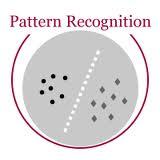Phase retrieval (PR) is an important component in modern computational imaging systems. Many algorithms have been developed over the past half-century. Recent advances in deep learning have introduced new possibilities for a robust and fast PR. An emerging technique called deep unfolding provides a systematic connection between conventional model-based iterative algorithms and modern data-based deep learning. Unfolded algorithms, which are powered by data learning, have shown remarkable performance and convergence speed improvement over original algorithms. Despite their potential, most existing unfolded algorithms are strictly confined to a fixed number of iterations when layer-dependent parameters are used. In this study, we develop a novel framework for deep unfolding to overcome existing limitations. Our development is based on an unfolded generalized expectation consistent signal recovery (GEC-SR) algorithm, wherein damping factors are left for data-driven learning. In particular, we introduce a hypernetwork to generate the damping factors for GEC-SR. Instead of learning a set of optimal damping factors directly, the hypernetwork learns how to generate the optimal damping factors according to the clinical settings, thereby ensuring its adaptivity to different scenarios. To enable the hypernetwork to adapt to varying layer numbers, we use a recurrent architecture to develop a dynamic hypernetwork that generates a damping factor that can vary online across layers. We also exploit a self-attention mechanism to enhance the robustness of the hypernetwork. Extensive experiments show that the proposed algorithm outperforms existing ones in terms of convergence speed and accuracy and still works well under very harsh settings, even under which many classical PR algorithms are unstable.
翻译:阶段检索(PR)是现代计算成像系统的一个重要组成部分。 许多演算法在过去半个世纪里已经发展了。 深层次学习的最近进步为快速和稳健的PR带来了新的可能性。 一个称为深层发展的新兴技术为传统基于模型的迭代算法和现代基于数据的深层学习提供了系统的联系。 由数据学习驱动的未叠加算法显示了与原始算法相比的惊人的性能和趋同速度的改善。 尽管它们的潜力, 大部分现有的演算法在使用基于层的参数时, 严格限于固定的迭接率。 在本研究中, 我们为深度发展了一个新的框架, 以克服现有的限制。 我们的发展是基于一种广泛泛的预期信号恢复( GEC-SR) 算法, 留下各种因素来进行数据驱动学习。 我们引入了一个超大型的算法网络, 而不是直接学习一套最优的缩缩略因素, 超网络学会如何根据临床环境产生最优的调定型调因素, 从而确保它适应不同的假设, 甚至可以适应不同的假设。 我们的超额的超额的网络, 将一个动态的递校正的机结构, 将一个在不断变动的机结构下, 发展一个动态的机的自我结构中, 发展一个动态结构, 发展一个动态的机变动的机变动的机变动的机变动的自我结构, 在不断变动的自我结构, 在不断变动的变动的变动的变动的变动的变动的变动的自我结构。



